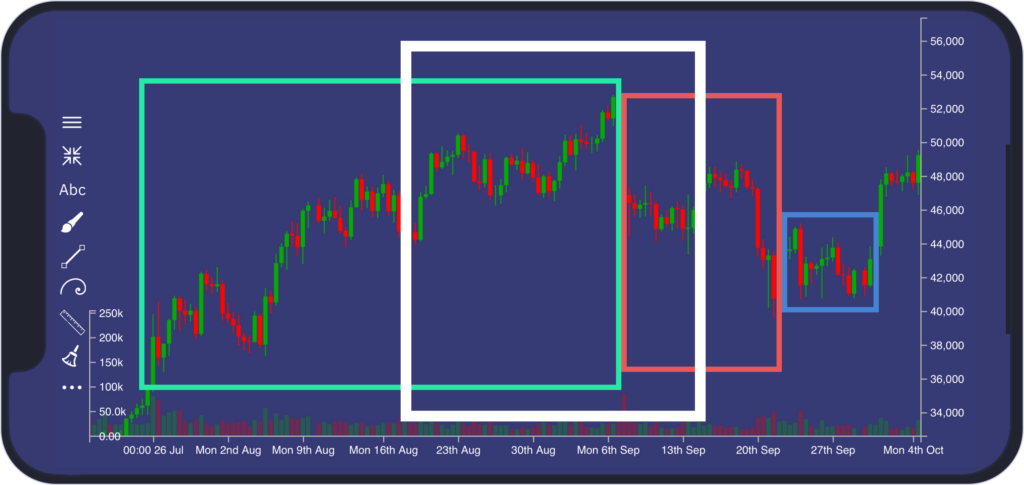How to Create Strategy: Real Market
Real Market
So here, this is where it gets tricky, because the market type can change any time. It is sometimes possible to predict when the market type changes. For example, if the market is exhausted in an uptrend, the trend can reverse to the downside.

We do not want to trade in the white rectangle because the trend changes at some point there.
Traders are advised to introduce a risk factor - it is a trader's own indicator which tells him when it is risky - in order to manage risks. The risk factor quantifies the deviation from the described market type. In the case that the risk factor is too high, traders can exit the position or decide not to trade.
When is it considered too high? Traders have to find it by trial and error.
Basically, the idea is to exit when it gets too risky and the market is about to change.
For example, the risk can be elevated when the market deviates from the moving average too much.
Note, if you specify too tight rules, there will be a small number of trades, but probably there will be a high success rate. On the contrary, too wide rules result in a low success rate. Play with the settings to achieve the best performance.
At this point, traders should look at higher time frames (long-term) in the case that there is an opposing pressure in their trading direction (and optimize their risk factor appropriately). While the trend may be strong on a lower time frame, the higher timeframe may indicate a reversal. In this case, traders do not want to enter because they would go against the trend on the higher time frame.
